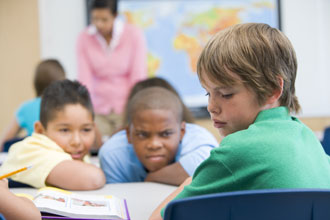
October is National Bullying Prevention Month. Each day, countless young people experience bullying at school, at home or online. Because many kids are reluctant to tell their parents or teachers, it is impossible to know just how many children are affected. We do know bullying affects everyone involved - those who are bullied, those who bully and those who witness bullying.
Bullying victims may experience:
Children who get bullied often feel like outcasts, especially when the bully is popular among peers. If your child is not a victim of bullying, teach him how to stand up for others. Sometimes, bullies will quit if the victim has a friend to stand up for him or her. Encourage your children to talk to you or their teachers if they are not sure how to handle a situation, whether they are a victim or a bystander.
Bullying doesn’t just happen on the playground anymore, it can happen online through social media or by text message. Cyberbullying is the use of technology to harass, threaten or embarrass another person. Mean or cruel texts, tweets or statuses are easy forms of cyberbullying to spot. Less obvious acts could include impersonating an individual, creating a fake account or posting embarrassing or personal photos. Although it may feel tempting, kids should not respond back to the cyberbully; it only fuels the fire.
While it’s not easy to empathize with a bully, there is a likely a reason he or she feels the need to bring others down. Whether it is lack of supervision, aggression in the family or peer pressure, bullies have low self-esteem. Child bullies want to hurt or embarrass others in order to make themselves feel better. Bullies are more likely to abuse substances, get into fights, drop out of school and have criminal convictions as adults.
Minority groups, disabled children, and lesbian, gay, bisexual, transgender or questioning (LGBTQ) youth may be at a greater risk for being bullied. Kids who are perceived as different such as being overweight or underweight, being the new kid, wearing glasses or coming from a low income household are also at a higher risk of being picked on. However, if a child falls into one of these categories, it does not mean he or she will automatically be bullied.
It is important to educate children about bullying at a young age. If your child is being bullied, let them know that it is not his or her fault. Consider sharing bullying experiences you may have encountered during childhood. Encourage them to stand up to the bully if they feel safe or to simply ignore it and walk away. The bully is looking to get a rise out of their victim, so if the child pays no attention, the situation could resolve. Treating one another with kindness and respect can help eradicate bullying.